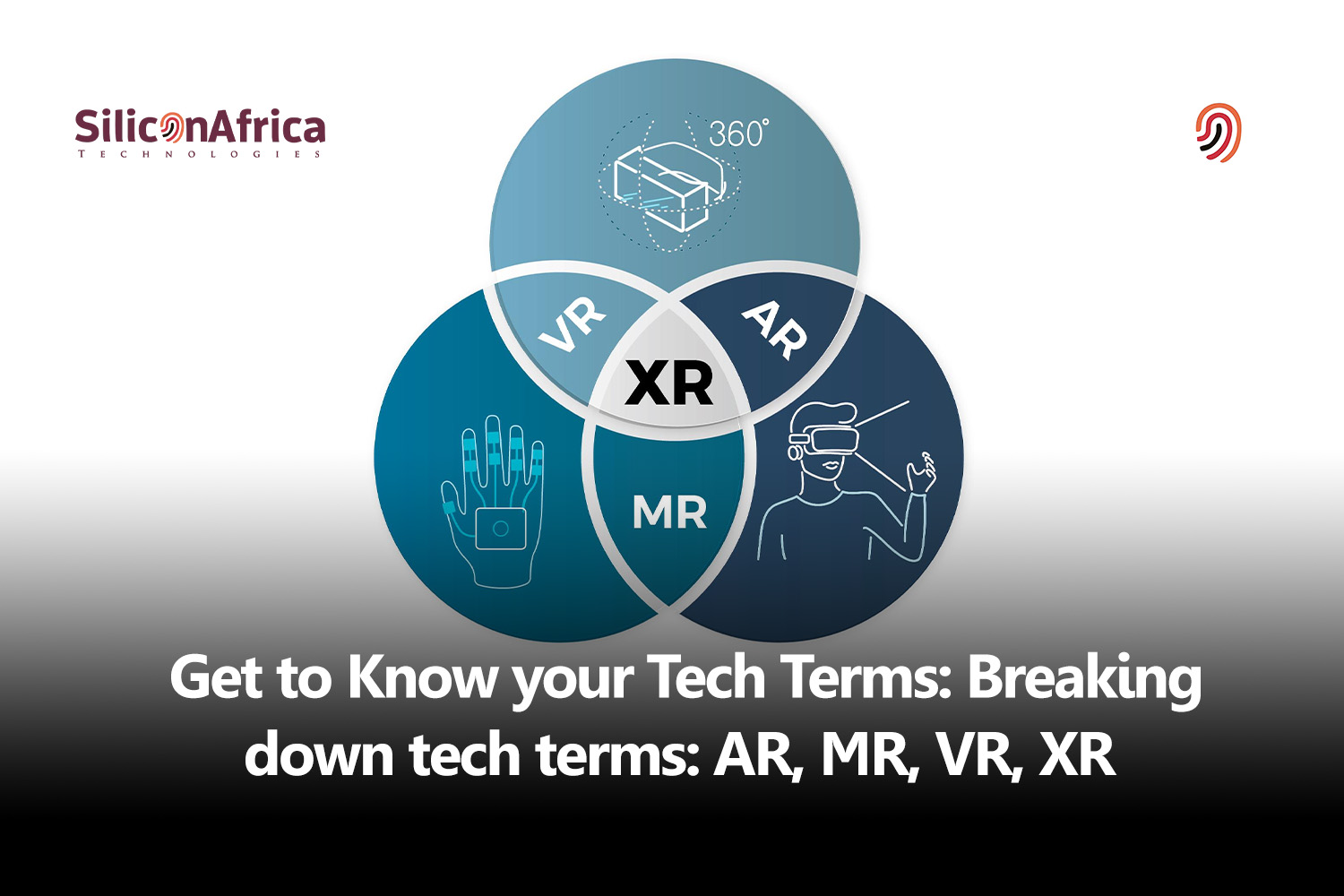Physical Address
60 Ekwema Cres, Layout 460281, Imo
Physical Address
60 Ekwema Cres, Layout 460281, Imo

In the large scope of technology, there are lots of acronyms and buzzwords like AR-Augmented Reality or MR-Mixed Reality, sometimes it creates a perplexing jargon for those not deeply immersed in the tech field.

Among the terms that have gained prominence in recent years are AR, MR, VR, and the umbrella term XR.
In this article, we will dissect these tech terms, exploring their definitions, applications, and the impact they wield across various industries.
First of all, Augmented Reality, or AR, refers to a technology that overlays digital information – such as images, sounds, or data, onto the real-world environment.
Then, unlike Virtual Reality (VR), which immerses users in a completely digital space, Augmented Reality increases the real-world experience by adding a layer of computer-generated elements.
Applications of AR: Augmented Reality finds applications across diverse sectors, from entertainment and gaming to education, healthcare, and business.
In gaming, Augmented Reality has brought virtual characters into the physical world through mobile devices.
Educational apps also use Augmented Reality to provide interactive and immersive learning experiences.
Furthermore, in healthcare, Augmented Reality provides surgeons with real-time information during procedures.
Key Features of Augmented Reality:

Mixed Reality, often abbreviated as MR, represents a spectrum that encompasses both the physical and digital worlds.
Unlike Augmented Reality, Mixed Reality goes further by not just overlaying but fully integrating digital content into reality. creating an easy and interactive experience.
Applications of MR: Mixed Reality is also making significant strides in industries such as manufacturing, design, and collaborative workspaces.
For example, in manufacturing, Mixed Reality is used for virtual prototyping and then, in training scenes where digital and physical elements coexist.
Key Features of Mixed Reality:
Virtual Reality, known as VR, is a technology that immerses you in a digital environment, shutting out the physical world.
Virtual Reality also typically involves the use of headsets or other devices to create a simulated reality that users can interact with.
Applications of VR: Virtual Reality has gained prominence in gaming, simulations, training, and entertainment.
In gaming, Virtual Reality offers unparalleled experiences.
In healthcare, it is also used for medical training simulations and therapeutic applications.
Key Features of Virtual Reality:

Extended Reality, or XR, is an umbrella term that encompasses Augmented Reality, Virtual Reality, and Mixed Reality.
XR also acknowledges the continuum that ranges from fully real to fully virtual environments. It blends physical and digital realities.
Applications of XR: XR is also a versatile concept applicable across numerous industries.
From creating interactive marketing campaigns with Augmented Reality to simulating realistic training scenarios with Virtual Reality and blending digital and physical elements in Mixed Reality, XR is reshaping how we perceive and interact with the world.
Key Features of XR:
As technology continues to advance, understanding these key terms – Augmented Reality(AR), Mixed Reality(MR), Virtual Reality(VR), and Extended Reality (XR)—becomes increasingly important.
Whether you’re exploring new dimensions in gaming, revolutionizing education, or transforming business operations, grasping the nuances of these technologies empowers you to harness their full potential.
Vending Machines Using Facial-recognition Technology Discovered in a Canadian University
TechUplift Program is Offering Free Training and Certificates to Assist Tech Enthusiasts